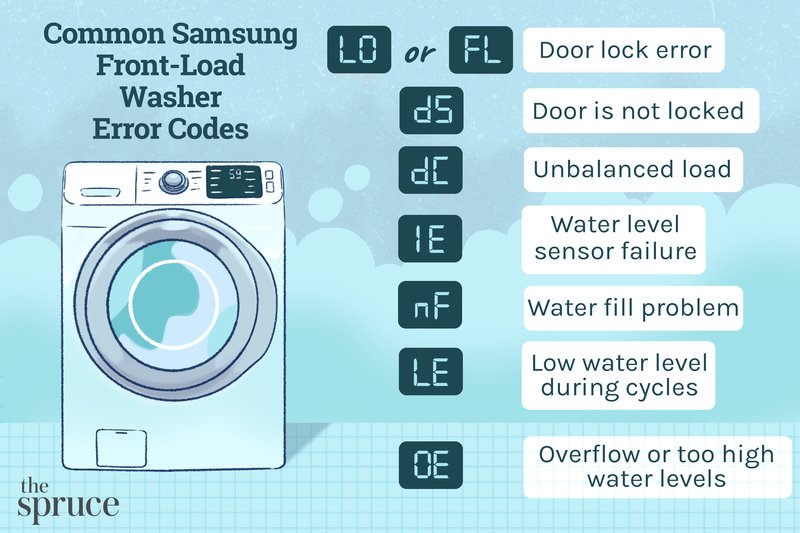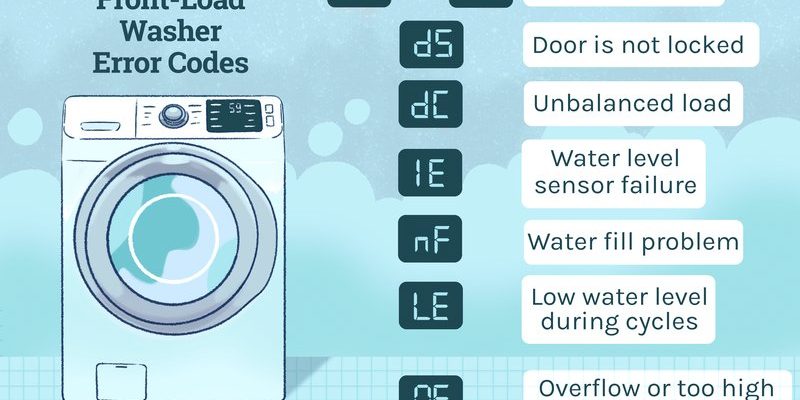
Here’s the deal: error codes in washing machines are like messages from the machine, trying to communicate that something’s not quite right. Think of it as the machine waving a little red flag, asking for your attention before the situation potentially worsens. The F2 error code, specifically in Samsung washing machines, usually relates to an issue with the drain system. So, if your machine is flashing F2, it’s saying, “Hey, I can’t seem to drain the water properly!” Let’s dive deeper into what this means and how you can troubleshoot the problem.
Understanding the F2 Error Code
At its core, the F2 error code is linked to a drainage problem. Imagine trying to pour water through a straw that’s clogged; the water won’t flow efficiently, right? That’s exactly what’s happening with your washing machine. When your Samsung washing machine can’t drain water effectively, it triggers the F2 code to alert you of the issue. There could be several reasons for this, ranging from simple blockages to more complex mechanical failures.
One of the most common culprits is a clogged drain hose. Over time, detergents, dirt, and debris can build up and obstruct the hose, much like a clogged sink. This blockage prevents water from leaving the drum, causing the machine to halt and display the error. Alternatively, you might have a kinked or bent hose that’s obstructing water flow. Visualize this as trying to sip from a straw with a bend in it—it doesn’t work very well, does it?
Another possible cause could be an issue with the washing machine’s drain pump. The pump is like your dishwasher’s heart, working to push water out of the machine. If it’s malfunctioning or obstructed by foreign objects, water won’t drain, and the F2 code appears. So, it’s crucial to examine both the hose and the pump when troubleshooting this error.
How to Fix the F2 Error Code
So, you’ve identified that there’s an F2 error, but what can you do about it? Start by checking the drain hose. Ensure it’s not kinked or bent and look for any visible blockages. You can try gently removing the hose and cleaning it out. Imagine it like clearing out a garden hose; sometimes, a little shake and rinse can do wonders.
Next, move on to the drain pump. This can be a bit more hands-on, but don’t worry, you’ve got this. Unplug your machine before starting any maintenance for safety reasons. Once that’s done, locate the pump—usually found at the base of the machine. Check the pump filter for any debris or lint that might be causing the blockage. Remove the debris, and give the pump a little clean.
If these steps don’t resolve the issue, it might be time to consider if the pump itself is faulty. Much like a fan with a broken blade, a faulty pump can’t function properly. In such cases, replacing the pump could be the answer. If you’re uncomfortable doing this yourself, it might be wise to call in a professional technician to avoid causing any further damage.
Preventing the F2 Error Code
Like most things in life, prevention is better than cure. The good news is that you can take steps to keep that F2 error at bay. Let’s start with regular maintenance. It’s a bit like keeping your car in good shape; occasional checks and cleaning can prevent issues from cropping up. Clean out the drain hose and pump filter every few months to prevent blockages from forming.
It’s also smart to be cautious about what goes into the machine. Avoid washing items with loose debris or large amounts of dirt that could clog the system. Use the right amount of detergent, as too much soap can leave a gummy residue that might contribute to clogging. Imagine trying to get a sugar cube through a straw—a little goes a long way.
Finally, keep an eye out for any early signs of trouble. If the machine is unusually noisy or not draining properly, it’s your cue to investigate before it escalates into a full-blown F2 error. By staying proactive and attentive to your washing machine’s needs, you can enjoy many smooth, error-free laundry days ahead.
Remember, while an F2 error can seem daunting, it’s usually a manageable issue with the right approach. Regular maintenance and a little bit of detective work can keep your washing machine running smoothly, so you can get back to enjoying your clean clothes without a hitch!
